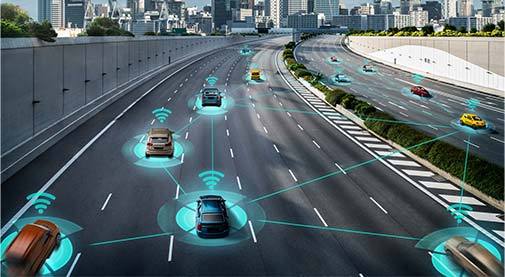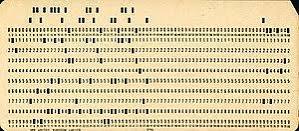#ADAS Technology
Explore tagged Tumblr posts
Text
Lotus Eletre S: The Ultimate Luxury Electric SUV
₹2.75 Cr Design and Styling The Eletre S stands out with its futuristic and aerodynamic design. Exterior: The flush illuminated door handles, frameless doors, and gloss black aluminum roof give the SUV a sleek, minimalist look. The LED headlamps with high beam assist and sharp daytime running lights (DRLs) enhance visibility and style. With features like a touch-activated electric charging…
#112 kWh battery#600 km range#Active Air Suspension#ADAS Technology#Advanced Safety Features#Ambient Lighting#AWD EV#digital cockpit#Electric Luxury Car#Electric SUV#EV innovation.#Fast charging#Futuristic SUV#High-performance SUV#KEF audio system#Lotus design#Lotus Eletre S#Luxury EV#Premium interiors#Smart climate control#Wireless connectivity
0 notes
Text
Teksun Blog- How Does ADAS Work and Why Is It Important?

Advanced Driver-Assistance Systems (ADAS) are sophisticated technologies that employ computer vision to enhance road safety. By processing visual data through tasks like object recognition and classification, ADAS systems empower vehicles to assist drivers and potentially prevent accidents.
The ADAS market is experiencing rapid growth, projected to reach USD 65.1 billion by 2030, driven by increasing consumer demand for safer vehicles. ADAS features can be integrated into new vehicles or retrofitted to existing ones, offering varying driver support and customization levels.
The Importance of Advanced Driver-Assistance Systems (ADAS)
Advanced Driver-Assistance Systems (ADAS) are revolutionizing road safety by mitigating human error, the leading cause of traffic accidents. These systems enhance the driving experience through automation, providing features like lane departure warnings and automatic emergency braking.
By reducing the likelihood of collisions and minimizing their severity, ADAS significantly decreases fatalities and injuries.
Beyond saving lives, ADAS also alleviates the financial burden associated with accidents, reducing insurance claims and property damage.
Ultimately, ADAS technologies are pivotal in creating safer roadways for drivers, passengers, and pedestrians alike.
Advantages of ADAS: Enhancing Road Safety and Driving Experience
Advanced Driver Assistance Systems (ADAS) offer a multitude of benefits that contribute to safer and more convenient driving experiences:
Enhanced Safety: ADAS systems significantly reduce the risk of accidents by automating critical driving tasks, monitoring the environment, and providing timely alerts. Features like automatic emergency braking, lane departure warning, and blind-spot monitoring actively prevent collisions.
Improved Driver Assistance: By providing real-time information and alerts, ADAS systems empower drivers to make informed decisions and respond effectively to potential hazards. Adaptive cruise control, traffic sign recognition, and night vision enhance situational awareness and reduce driver fatigue.
Increased Driving Comfort: ADAS technologies provide a more relaxed and enjoyable driving experience through features like adaptive cruise control, lane-keeping assist, and parking assistance. These systems alleviate stress and reduce driver workload, particularly in congested traffic.
Fuel Efficiency: Some ADAS features, such as adaptive cruise control, can optimize fuel consumption by maintaining a steady driving speed and reducing unnecessary acceleration and braking.
Data-Driven Insights: ADAS systems generate valuable data on driving habits and road conditions, which can be used to improve infrastructure, traffic management, and vehicle design.
By incorporating advanced technologies and intelligent algorithms, ADAS is transforming the automotive industry and making our roads safer for everyone.

ADAS: The Brain Behind the Wheel
Advanced Driver Assistance Systems (ADAS) are transforming vehicles into intelligent machines. At the heart of ADAS are sophisticated computing platforms that process data from an array of sensors - cameras, radar, lidar, and ultrasonic - to create a 360-degree perception of the vehicle's surroundings. These systems, often powered by powerful SoCs, enable vehicles to make real-time decisions, assisting or taking over driving tasks to enhance safety and comfort.
As autonomy advances, the demand for more powerful, energy-efficient, and compact computing solutions grows exponentially. This drives innovation in hardware design, paving the way for a future where vehicles are not just modes of transport but intelligent agents navigating complex environments.
Types of ADAS: Passive vs. Active
Advanced Driver Assistance Systems (ADAS) can be categorized into two primary types based on their level of driver involvement:
Passive ADAS: These systems provide drivers with alerts and warnings, requiring them to take corrective action. Examples include:
Blind-spot monitoring
Lane departure warning
Rear cross-traffic alert
Forward collision warning
Active ADAS: These systems provide alerts and intervene to assist or take control of the vehicle in certain situations. Examples include:
Adaptive cruise control
Automatic emergency braking
Lane-keeping assist
Traffic jam assist
Parking assist
While passive ADAS systems enhance driver awareness, active ADAS systems offer a higher level of safety by taking proactive measures to prevent accidents.
ADAS: Revolutionizing the Driving Experience
Advanced Driver Assistance Systems (ADAS) are transforming the automotive landscape by enhancing safety, comfort, and convenience. These systems utilize a combination of sensors, cameras, and sophisticated algorithms to assist drivers in various driving scenarios.
Critical ADAS applications include:
Adaptive Cruise Control (ACC): Maintains a safe following distance from the vehicle ahead, automatically adjusting speed to traffic conditions.
Lane Departure Warning (LDW) and Lane Keeping Assist (LKA): These systems detect unintended lane departures and provide visual or tactile warnings or gently steer the vehicle back into its lane.
Automatic Emergency Braking (AEB): Applies the brakes autonomously to prevent or mitigate collisions with vehicles, pedestrians, or cyclists.
Blind Spot Detection (BSD): Alerts drivers to vehicles in their blind spots, reducing the risk of accidents when changing lanes.
Traffic Sign Recognition (TSR): This involves identifying and displaying traffic signs to the driver, enhancing awareness and compliance.
Driver Monitoring Systems (DMS): Detect driver fatigue, distraction, or inattention and provide alerts to prevent accidents.
Parking Assist: Uses sensors and cameras to assist with parallel and perpendicular parking.
Head-Up Display (HUD): Projects essential driving information onto the windshield, improving driver focus and reducing distractions.
By incorporating these and other advanced features, ADAS systems facilitate a safer, more efficient, and more enjoyable driving experience.
ADAS Sensors: The Eyes and Ears of the Vehicle
Human-Machine Interface (HMI): Bridging Driver and Vehicle
The Human-Machine Interface (HMI) bridges the driver and the vehicle's advanced systems. It ensures that ADAS features are intuitive, informative, and non-distracting. Effective HMI design is crucial for maximizing the benefits of ADAS while minimizing potential risks.
Key HMI elements include:
Displays: Dashboards, head-up displays, and in-car infotainment systems provide visual feedback to the driver.
Controls: Buttons, knobs, touchscreens, and voice commands allow the driver to interact with the ADAS system.
Haptic Feedback: Tactile sensations can enhance driver awareness and engagement.
By carefully considering the driver's needs and preferences, ADAS manufacturers can create HMIs that enhance safety, comfort, and overall driving experience.
ADAS vs. Autonomous Driving: A Comparative Overview
Advanced Driver Assistance Systems (ADAS) and Autonomous Driving are often used interchangeably, but they represent distinct levels of vehicle automation.
ADAS: Enhancing the Driving Experience
ADAS systems are designed to assist drivers by providing features that enhance safety, comfort, and convenience. These technologies include:
Adaptive Cruise Control (ACC): Maintains a safe following distance from the vehicle ahead.
Lane Departure Warning (LDW) and Lane Keeping Assist (LKA): Alerts the driver of unintentional lane departures and can apply corrective steering input.
Automatic Emergency Braking (AEB): Detects potential collisions and automatically applies the brakes.
Blind Spot Monitoring (BSM): Alerts the driver to vehicles in blind spots.
Parking Assist: Helps with parallel and perpendicular parking maneuvers.
Key point: ADAS systems are designed to augment human driving capabilities, not replace them. The driver remains ultimately responsible for vehicle control.
Autonomous Driving: The Future of Mobility
Autonomous vehicles, on the other hand, aim to replace the human driver entirely. They rely on complex sensors, cameras, radar, and artificial intelligence to perceive their environment, make decisions, and control the vehicle.
Levels of Autonomy: The Society of Automotive Engineers (SAE) defines six levels of driving automation, ranging from Level 0 (no automation) to Level 5 (full automation).
Challenges: Developing fully autonomous vehicles presents significant challenges, including technical, ethical, and legal considerations.
Key point: While ADAS systems are widely available, achieving full autonomy remains an ongoing research and development effort.
ADAS focuses on driver assistance, while autonomous driving aims for complete vehicle control. As technology advances, the lines between the two may blur, leading to a future of highly automated and safer transportation.
Conclusion
Advanced Driver Assistance Systems (ADAS) are revolutionizing the automotive industry by enhancing safety, comfort, and convenience. While ADAS technology offers significant advancements, it is essential to remember that drivers remain ultimately responsible for vehicle operation. By combining human judgment with technological innovation, ADAS can significantly reduce accidents and improve road safety.
As ADAS technology continues to evolve, we can expect to see even more sophisticated features and increased levels of automation in the future.
Please get in touch with our team of experts to explore how Teksun's Telep ADAS solutions can elevate your vehicle's capabilities.
0 notes
Text
How Cloud Computing in Autonomous Driving and ADAS Development
In Autonomous Driving and ADAS development, Cloud computing and Data plays a crucial role, where its management, re-use, and analytics can lay massive impact on development cost and timelines.
The automotive industry is going through a ‘Tech-Tonic’ change, mainly focusing on Autonomous Driving (AD) development in Cloud.
An autonomous vehicle (AV) processes the inputs (Data) from various sensors to make the driving decision. A typical autonomous vehicle (AV) generates upwards of 40 terabytes of data in a single day, and for autonomous driving (AD) development, this Data is ‘Gold’!
The data generated while testing AVs must be stored and re-used to train & refine the AD software and various Artificial Intelligence, Machine Learning, and Deep Learning software components.
With increasing complexity in the development cycle of a vehicle, there is a keen focus on data management and dynamic-distributed computation, as it can have a critical impact and costs can rise exponentially if computation and data are inefficiently managed.
Essentially, all the generated data must be classified as useful – not useful so that it can be re- used for the development process to save time and cost. Additional data (Petabytes) is generated during the development process, e.g., when one executes validation processes like Software in Loop (SIL), Model in Loop (MIL) Hardware in Loop (HIL), and Processor in Loop (PIL). Each version of these validation tests must be stored and made accessible to the engineers so that the algorithms can be evaluated and fine-tuned. And this activity must be done at ‘Hyper-Scale,’ e.g., an AV has to be tested in the virtual world (simulation) against millions of scenarios. If one virtual scenario is 2 minutes long, it will take 1000 days to execute, but at ‘Hyper-Scale,’ one can achieve this in 10 days.
The automotive industry is in the initial phase of adopting Cloud technology & techniques, and there is a lot that can be done in terms of application and innovations.
0 notes
Text

Remember, girls have been programming and writing algorithms way before it was cool!
👩🏻💻💜👩🏾💻
#history#ada lovelace#computers#programing#artificial intelligence#womens history#victorian age#women empowerment#the analytical engine#girls who code#1800s#historical figures#computer history#ai#girl power#technology#empowered women#historical women#algorithm#english history#coding#like a girl#role model#programming#nickys facts
69 notes
·
View notes
Text
I think at least part of the reason we get big video game studios trying to make their graphics hyperrealistic with visible pores and individual hairs – despite the fact that this just bloats the game and can look ugly/dated as sin – is the same reason we get live action remakes. Realism is gritty and "mature", stylization is cartoons and therefore for babies. And playing games is for adults.
#ada weblog tag#//everyone say thank you walt disney for entrenching the novel technology that was animation#//as a thing that is meant for children and childlike themes
4 notes
·
View notes
Text
I love women in stem
do YOU 🫵 love women in stem??
#riv’s stuff#women in stem#stem#feminism but as it should be#honoring the countless women whose discoveries and inventions made possible the world we know today#ada lovelace#hedy lamarr#cecilia payne#women in science#astrophysics#science#technology#engineering#mathematics#math#annie jump canon#cecilia payne gaposhkin#hypatia#sofia kavalevskaya#i think thats her name#elizabeth blackwell#theres a serious dearth of discussions of scientific women here#it makes me sad#pls if you know any more tag them#rosalind franklin#katherine johnson#dorothy vaughan#barbara mcclintock#marie curie#Lisa meitner
3 notes
·
View notes
Text
Will Indians buy the Rs 6 lakh Nano with 5-star safety, 70 hp, touchscreen system, ADAS and great technology?

Will Indians buy the Rs 6 lakh Nano with 5-star safety, 70 bhp, touchscreen system, ADAS and great technology?
#Will Indians buy the Rs 6 lakh Nano with 5-star safety#70 hp#touchscreen system#ADAS and great technology?#tech news#technoblade#microsoft#internet#tech#technology#gyan knowdlege#software#technically#nano 2023#nanowrimo#nanoka#nanon korapat#nanotechnology#word count
1 note
·
View note
Text
I cannot stress this enough. Looms were the first computers
Looms were the first computers.
The punch card system that old computers ran on? It came from weaving.

(Photo courtesy of the Museum of Obsolete Media)
This is the card of a Jacquard loom, introduced in 1801. Each card controls the weave, allowing for complex weaves to be somewhat automated.
Charles Babbage, father of the computer, in his Analytical Engine, used this exact principle for the earliest coding, described in 1837. Except he did it almost exclusively in principle. Ada Lovelace, having worked closely with Babbage, who named her the Enchantress of Numbers, is often credited with the true earliest computer code in about 1843.
By 1890 this punched-card system was being used for the United States census.

Punched cards such as these were in use in computers through the 1950s.
Today our computers are the hearts of stars, but only because the threads of fate taught us the way.
Computers are very simple you see we take the hearts of dead stars and we flatten them into crystal chips and then we etch tiny pathways using concentrated light into the dead star crystal chips and if we etch the pathways just so we can trick the crystals into doing our thinking for us hope this clears things up.
#science#technology#coding#ada lovelace#Charles Babbage#Jacquard#weaving#textile history#also “Enchantress of Number’’ goes so hard
113K notes
·
View notes
Text
#HERE Technologies#smarter#GenesysInternational#NavigationTech#DistractedDriving#RoadSafety#ADAS#3DMaps#SmartMobility#IndiaTransport#NikhilKamat#AutomotiveTech#DigitalMapping#electronicsnews#technologynews
0 notes
Text
In-Depth Analysis of the Mercedes-Benz EQB 250 Plus
₹70.9 Lakh The Mercedes-Benz EQB 250 Plus is a sophisticated all-electric SUV that epitomizes luxury, advanced technology, and environmental consciousness. Below, we delve deeper into its design, performance, features, and overall value proposition. Exterior Design The EQB 250 Plus inherits the signature Mercedes-Benz design language, characterized by clean lines and elegant…
#423 km Range#ADAS Technology#Advanced Safety Features#Burmester Sound System#DC Fast Charging#Eco-Friendly SUV#Electric Mobility#Electric SUV#EV Market#EV Performance#Family SUV#Luxury EV#MBUX infotainment#Mercedes Me App#Mercedes-Benz design#Mercedes-Benz EQB 250 Plus#premium interior#regenerative braking#Smart Connectivity#sustainable driving#Zero Emission Vehicle
0 notes
Text
Microchip advances ASA-ML camera development ecosystem in Japan with Nippon Chemi-Con and NetVision
July 4, 2025 /SemiMedia/ — Microchip Technology has joined forces with Nippon Chemi-Con and NetVision to introduce the first ASA-ML camera development ecosystem tailored for the Japanese automotive market. The platform supports scalable, high-speed asymmetric data transfer and hardware-based link-layer security to meet emerging cybersecurity standards in vehicles. The ecosystem builds on…
#ADAS system#ASA-ML camera#electronic components news#Electronic components supplier#Electronic parts supplier#Japanese automotive market#Microchip Technology#multi-vendor camera module#SDV connectivity#vehicle networking
0 notes
Text
Reposting because of the amazing comic!
Wrong: Ada Lovelace invented computer science and immediately tried to use it to cheat at gambling because she was Lord Byron's daughter.
Right: Ada Lovelace invented computer science and immediately tried to use it to cheat at gambling because that was the closest you could get in 1850 to being a Super Mario 64 speedrunner.
69K notes
·
View notes
Text
KPIT | Cutting Edge Automotive Software, Best Place to Grow
KPIT is a global partner to the Automotive Industry and Mobility Ecosystem for making software-defined vehicles a reality.
0 notes
Text

Ada Lovelace – The First Computer Programmer©wikimedia
Ada Lovelace, born in 1815, foresaw the incredible possibilities of computing long before the modern computer existed. Working alongside inventor Charles Babbage, Lovelace wrote detailed notes on his Analytical Engine, including what is widely considered the world’s first computer algorithm. She recognized that machines could do more than calculations—they could process symbols and create music or art, an idea far ahead of her time. Lovelace’s insights are now seen as the foundation of computer programming. In the 21st century, the tech world honors her legacy each year on Ada Lovelace Day, celebrating the achievements of women in STEM. Lovelace’s story demonstrates that visionary thinking knows no gender or era.
0 notes
Text
#Tata Technologies#Amazon Web Services (AWS)#SmartMobility#Innovation#Hackathon#EngineeringTalent#FutureOfMobility#EVs#ADAS#AutomotiveTech#InnoVent2025#electricvehiclesnews#evtimes#autoevtimes#evbusines
0 notes